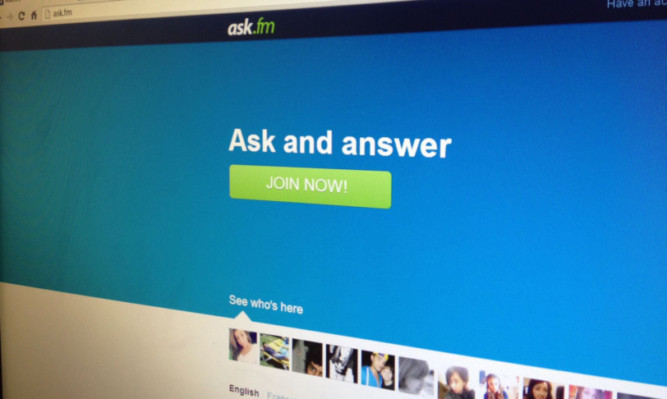
The latest poor young soul to take her own life after a barrage of cyber bullying must be a wake up call for social media sites to put their houses in order.
Fourteen-year-old Hannah Smith committed suicide after being abused on the ask.fm website. This site allows users to post questions and messages in complete anonymity.
Cruel bullies skulking in the shadows sent vile messages to Hannah urging her to kill herself. She was found hanged last week.
Sadly she isn’t the first teen to commit suicide after being tormented on this site.
Her distraught father wants the owners of the Latvian-based site to face manslaughter charges and has accused them of “not caring that teenagers are dying and killing themselves”.
He made a plea to David Cameron to bring in tough regulations and for it to be made easier to report and find the identity of cyber bullies.
The boom in social networking has caught law makers on the hop.
The Government has promised to take action but it’s a case of closing the barn doors after a great big horse has bolted.
It’s just far too easy for a sick individual to subject someone to a barrage of evil messages and to make their life a misery.
So we need to start with the service providers themselves.
It isn’t enough for the owners of ask.fm to call Hannah’s death a “true tragedy”. We need these smart, sharp internet entrepreneurs to provide far more protection for young users.
It’s exceedingly simple for bullies to log in and spread their noxious poison, so why can’t there be a very simple way to report such vile abuse and to catch those responsible?
Ask.fm are now saying they can “name and shame” those who sent the messages, but I suspect this is more to do with the fact they are losing advertising contracts than a sudden attack of conscience.
Big brands do not want to be associated with sites that allow cyber bullying and it could be that losing cash will make sites clean up their act.
Also, if the bullies know they will be caught they would soon stop.
It’s too simplistic just to say that those subjected to this abuse should close their accounts and walk away. That would be the grown up thing to do, but we are talking about very young teenagers who are often lonely and isolated.
Adults can swiftly block Twitter users or shut down their Facebook pages, but for teens that’s not so easy, and that’s why they need to be protected.
Social networking sites have become their window on the world.
It is just sad it can be such a warped and dangerous one.

Enjoy the convenience of having The Sunday Post delivered as a digital ePaper straight to your smartphone, tablet or computer.
Subscribe for only £5.49 a month and enjoy all the benefits of the printed paper as a digital replica.
Subscribe